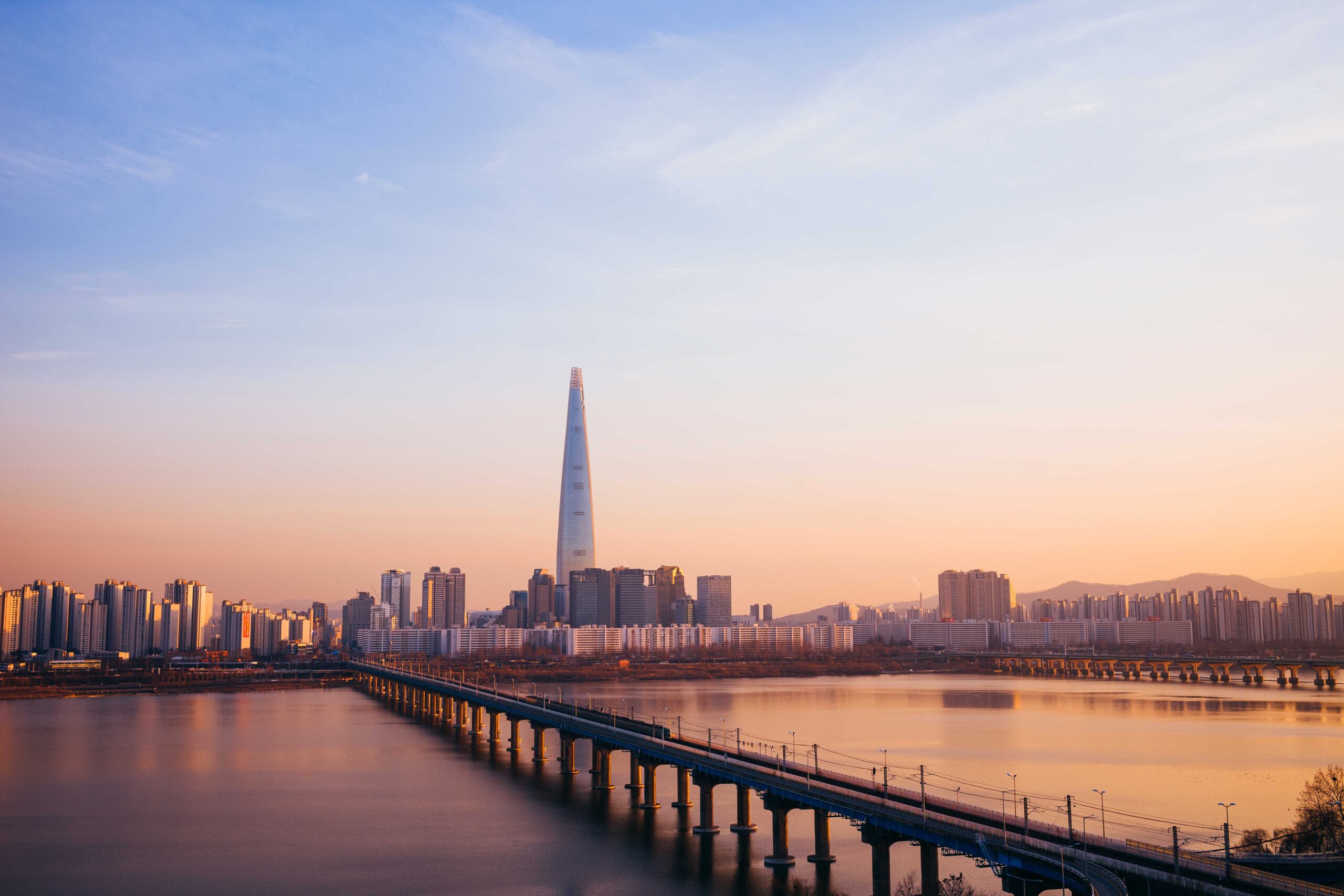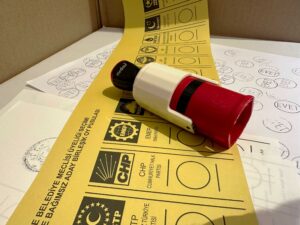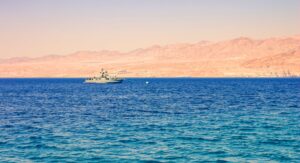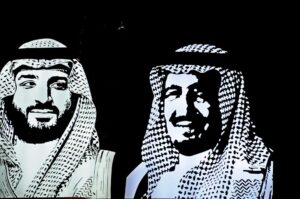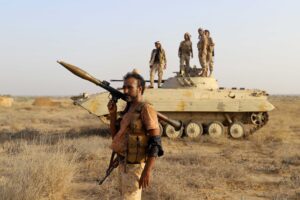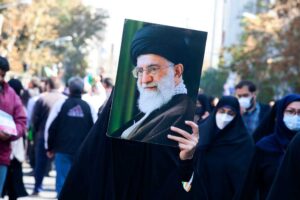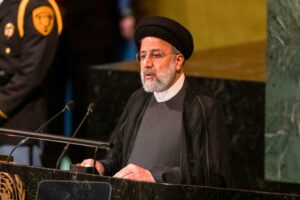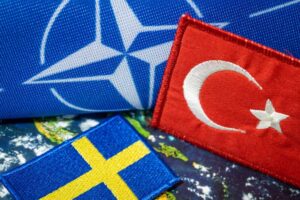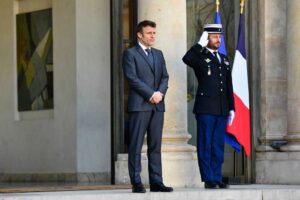This research was supported by the Academy of Korean Studies Grant (AKS-2017-R35).
South Korea’s foreign relations with the Persian Gulf have changed over the years from passive to extensive and wide-ranging. Seoul’s economic interests in the region have increased and it has striven to carefully balance its policies between economics and politics as well as regional and global considerations. Yet, the country is increasingly drawn into making tough decisions due to political and security issues in the region.
South Korea’s Interests in the Persian Gulf: The Economics
In the 1950s, South Korea, which was busy undergoing state rehabilitation following the Korean War and building up its defences against the ever-present North Korean threat, did not see the Persian Gulf as important to its interests. Until the latter half of the 1960s, the total trade between South Korea and the Gulf region was limited.
The development of the South Korean economy and its lack of natural resources increased its need for oil imports and intensified its search for foreign markets for its products and services. The Middle East, and in particular, the Persian Gulf, with its huge oil and gas reservoirs and the proximity to sea lanes, was an excellent source for energy for the developing South Korean economy. This led, in the long term, to South Korea’s increasing dependence on the Gulf’s oil and gas.
The 1970s symbolized the beginning of extensive diplomatic and economic relations between South Korea and the Persian Gulf. During the 1970s, South Korea established diplomatic relations with Oman and Qatar (1974), Bahrain (1976), Kuwait (1979), and the United Arab Emirates (1980).
But Seoul’s dependency on the Gulf was not limited to oil and gas alone:[i] it also became a destination for South Korean conglomerates (chaebol) to export to, mainly in the area of construction and infrastructure. Rising oil prices and the growing exchange reserves of the Persian Gulf states increased their attractiveness to Korean companies.[ii]
The conglomerates offered the Persian Gulf companies large construction projects at relatively low costs and without any of the political or ideological ambitions that might have been attached to those offered by Western companies.
The chaebols served as Korean diplomats in the region, helping the government to improve diplomatic relations and thus legitimize South Korea over North Korea, which had friendly relations with other Middle Eastern states like Syria. The conglomerates offered the Persian Gulf companies large construction projects at relatively low costs and without any of the political or ideological ambitions that might have been attached to those offered by Western companies. Hyundai and Daewoo were the first to win billion-dollar construction projects in the Persian Gulf. On the other hand, the US’ oil embargo in the 1970s and the attendant rise in oil prices showed Seoul how dependent it was on the oil market and how sensitive it was to oil price fluctuation.
In the 1980s-90s, the decline in oil prices reduced the number of projects being offered by the Gulf states, which, in turn, led to a decrease in the volume of trade between South Korea and the Persian Gulf. The increase in South Korea’s foreign debts and falling oil prices, which influenced the volume of trade with the Gulf, were some of the economic problems that South Korea faced during the Fifth Republic (1981-1987) under President Chun Doo-hwan and constituted another factor influencing the slowdown in trade.[iii]
During the Iraq-Iran war, South Korean companies, alongside their foreign counterparts, were waiting for the first day after the war. They assumed that, once the war ended, both Iraq and Iran would need to invest in large reconstruction projects. Shortly after the end of the war, Iraq’s Saddam Hussein indeed offered reconstruction and infrastructure project bids worth billions of dollars to foreign companies.[iv] However, the companies’ ambitions were crushed prematurely by President Hussein’s decision to invade Kuwait in August 1990.
Case-Studies on South Korea’s Economic Engagement in the Gulf
1. The United Arab Emirates
One of South Korea’s main economic partners in the Gulf is the United Arab Emirates. It is the second largest oil supplier to South Korea as well as being a huge investor in South Korea’s I.T. industry. The importance of the United Arab Emirates for South Korea’s economy can be seen in Seoul’s decision to evaluate the Free Trade Agreement (FTA) between South Korea and the UAE in 2012.[v] Almost a decade later, in 2021, both states pushed for the FTA negotiation.[vi] The United Arab Emirates’ nuclear energy project – the building and operating of four nuclear reactors for civilian use – was one of Korea’s biggest economic achievements in the global arena. South Korean officials, including President Lee Myung-bak, visited the United Arab Emirates to promote their chances of winning the project in 2009. Winning the 40-billion-dollar United Arab Emirates’ nuclear power energy contract in 2009 was important recognition of South Korea’s nuclear industry.[vii] Seoul saw this contract as an entry ticket into this highly lucrative market, which includes other states in the region that might consider building nuclear power plants.[viii]

2. Iran
Iran, also, has become one of South Korea’s important trade partners in the Persian Gulf. In 2010, the total trade between the two countries stood at 11.5 billion dollars. A year later, this leapt to 18.4 billion dollars. South Korean companies won projects worth millions of dollars in Iran, and Seoul saw opportunities for increasing the future volume of trade,[ix] but the Iranian nuclear issue constrained opportunities. Trade between the two states decreased to 8.8 billion dollars in 2020 as a result of the United States’ withdrawal from the JCPOA and subsequent implementation of sanctions.
South Korea’s Interests in the Persian Gulf: The Politics
South Korea’s fundamental policy in the Persian Gulf stresses the need of always separating political and economic considerations by keeping a neutral position and refraining from biased decisions or actions which can affect their huge economic interests.
However, over the years, Seoul has had to face recurrent dilemmas, especially when its policy contradicted US interests in the Middle East. Lately, its ambitions are considered as those of a medium power, which means that its influence is not nearly as significant as that of superpowers. Still, its effect on the regional and global affairs is large enough to receive attention in both arenas.
Case Studies on South Korea’s Political Engagement in the Gulf
1. The Iran-Iraq War (1980-1988)
South Korea’s faced its first politico-economic dilemma during the Iran-Iraq War. During this time, trade between South Korea and both Iraq and Iran declined but Seoul faced a dilemma regarding which side to support. Ultimately, Seoul decided to keep its neutrality throughout the war and expressed public support for neither party. This policy allowed it to continue to trade with both sides without being accused of bias or making political statements that could jeopardize its trade with other Arab states.
2. First Gulf War, Operation Desert Shield (1991)
During the First Gulf War, South Korea was asked by Washington to send military forces to help free Kuwait from Iraqi aggression. In the end, Seoul sent only 314 soldiers who assisted with primarily logistical tasks and did not participate in any combat operations. Seoul was thus able to participate in the military operation in Iraq without shattering its relatively neutral position and without clashing with Washington.
3. Operation Iraqi Freedom (2003)
Operation Iraqi Freedom was an entirely different story. This time, Washington was unable to gain global support to legitimize its military operation. This lack of support led Washington to increase the pressure on South Korea and Japan to send military forces to Iraq.[x]
This pressure led to a political debate in South Korea between the supporters and opponents of sending South Korean military forces to Iraq.[xi] Seoul was acutely aware that another refusal to contribute forces would damage their relations and might even lead to the withdrawal of some of the U.S. forces stationed in South Korea.[xii]
In the end, Seoul agreed to send forces to Iraq but refused to comply with all of Washington’s requests, including sending troops to the combat zone. In 2004, South Korea dispatched 3,500 soldiers to Iraq to work mainly on civilian tasks. The South Korean government actively emphasized this aspect of its involvement in an attempt of avoiding being tagged in the Arab world as an anti-Muslim power.[xiii]
4. The Iranian Nuclear Issue
Having managed for years to separate politics from economic interests, including maintaining relations with Iran during the Iran-Iraq War and even during the Iranian nuclear crisis,[xiv] the need to take a stand on the Iranian nuclear issue has been gradually growing for South Korea over the last two decades.
When the Iranian nuclear issue became a high priority for Washington as well as for the UN Security Council, Seoul realised it could not continue sitting on the fence. At first Seoul interpreted UNSCR 1929 in a way that would allow South Korea to continue its trade with Iran, nevertheless, Washington’s request in 2010 to implement concrete sanctions followed shortly after.[xv]
Seoul’s initially selective sanctions policy faced harsh opposition from Washington, and South Korea was eventually pressured to limit its trade with Iran. This had a negative economic impact on some 3,000 South Korean businesses operating in Iran, entailed the loss of a billion-dollar trade deal[xvi], and strained relations between Seoul and Tehran. South Korea was concerned that its long-term strategy of political neutrality might be shattered.[xvii] The nuclear deal agreement with Iran in 2015 changed South Korea’s policy towards Iran once again. The P5+1 agreement on the Joint Comprehensive Plan of Action – the agreement between Iran and Russia, France, China, the United Kingdom, and the United States – led to a global change in policy approaches towards Iran. Once the agreement was signed and the fear of nuclear Iran was delayed, business delegations from all over the world hurried to the country to look for potential economic deals. South Korea could not afford to stay behind and miss business opportunities in Iran. President Park Guen-hye visited Iran in May 2016, accompanied by a huge business delegation [xviii] in an attempt to encourage the ‘Second Middle East Boom’.[xix]

Seoul hopes that the Biden administration might be able to re-sign the JCPOA and reopen the Iranian market for South Korean companies.
President Donald Trump’s decision to withdraw from the agreement[xx] raised concerns in South Korea about the trade and business opportunities in Iran. Seoul hopes that the Biden administration might be able to re-sign the agreement and reopen the Iranian market for South Korean companies.
Conclusion
The importance of the Persian Gulf for South Korea’s interests is likely to keep growing alongside its developing economy and the rising need for oil, gas, and foreign markets for Korean products and services. Korean dependency on oil and gas, mainly from the Persian Gulf, will continue to influence Seoul’s policy towards the Gulf region. But, in the coming years, Seoul will have to substantiate its middle power status and possibly become more active, sometimes even pursuing policies that might clash with its interests in the region; otherwise, as the incumbent President Moon Jae-in has said in some of speeches, it will continue to be perceived as a middle power state on economic issues alone. Seoul will continue its foreign policy in the Persian Gulf by balancing its local and global interests in and thus minimize the potential of clashing with the regional states or the interests of the superpowers.
[i] Davidson, C, “Persian Gulf–Pacific Asia Linkages in the 21st Century: A Marriage of Convenience?” Research Paper, Kuwait Programme on Development, Governance and Globalization in the Gulf States, 2010, p.5, Available at: http://eprints.lse.ac.uk/55250/1/Davidson_2010.pdf; [Accessed 10 October 2021].
[ii] Woo, J. E. Race to the Swift, (New York: Columbia University Press, 1991),p.180
[iii] Clifford, L. M. Troubled Tiger: Businessmen, Bureaucrats, and Generals in South Korea, (London: M.E. Sharpe, 1994).
[iv] Ashok, D. (2003), “The Tiger Revives”, Middle East Economic Digest, 47(26): 21.
[v] Al-Sudairi, M. T. (2012), “South Korea-GCC Economic Relations: An Overview”, GRC GULF Papers, 8:10, Available at: https://www.files.ethz.ch/isn/156678/GCC-ROK_Paper_final_6-11-2012_8858.pdf; [Accessed 10 October 2021].
[vi] Yonhap, “S. Korea, UAE agree to push for free trade deal”, The Korea Times, 14 October 2021, Available at: http://www.koreaherald.com/view.php?ud=20211014000459; [Accessed 10 October 2021].
[vii] George, R. (2012) “Why are the GCC States Turning to Nuclear Power?”, ORF Issue Brief, 46, Available at: https://www.orfonline.org/research/why-are-the-gcc-states-turning-to-nuclear-power/; [Accessed 10 October 2021].
[viii] Baker, A. and Cho, M.Y. “South Korea wins landmark Gulf nuclear power deal”, Reuters, 27 December 2009, Available at:http://www.reuters.com/article/us-emirates-korea-nuclear/south-korea-wins-landmark-gulf-nuclear-power-deal-idUSLDE5BQ05O20091227; [Accessed 25 September 2021].
[ix] Manyin, M.E., and Nikitin, M.B., and Chanlett-Avery, E., and Rinehart, I.E. and Cooper, W.H, U.S.–South Korea Relations, (Washington DC: Congressional Research Service, 2013),p.4.
[x] Chang, B.O, “Middle East Peace and Korea Policy in Iran after Sanctions against Iran” (Iran jejae ihu jungdong pyeonghwa wa hanguk eui dae iran jeongchaek).
Korea Middle East Society (Hanguk Jungdong Hakhoe), 30(1),2012. (Korean)
[xi] Hong, K, “The Impact of NGOs on South Korea’s Decision to Dispatch Troops to Iraq”, Journal of International and Area Studies, 2005, 12(2).
[xii] Levkowitz, A, “The 7th Withdrawal – Has the U.S. Forces’ Journey Back Home from Korea Begun?”, International Relations of the Asia-Pacific, 2008, 8(2).
[xiii] Kirk, D, “An Unwilling Coalition Partner: Why Korea cares about Iraq”, The New Leader, March 2007.
[xiv] Manyin 2014.,p.19.
[xv] Choe, S. H, “U.S. Presses South Korea to Reduce Oil Imports from Iran”, The New York Times, 17 January 2012, Available at: http://www.nytimes.com/2012/01/18/world/asia/us-presses-south-korea-to-reduce-oil-imports-from-iran.html?mcubz=0; [Accessed 25 September 2021].
[xvi] Blechman, B., and Brumberg, D, Engagement, Coercion, and Iran’s Nuclear Challenge, (Washington D.C.: The Henry L. Stimson Center, 2010), p.56.
[xvii] Hancocks, P. (2012) ‘Iran Threatens To Stop Imports From South Korea Over Oil Halt‘, CNN, 27 June 2012, Available at: http://edition.cnn.com/2012/06/27/world/asia/korea-iran-oil/index.html; [Accessed 25 September 2021].
[xviii] Ramirez, E, “Iran Tour Strengthens South Korea’s Middle Power Grab”, The Diplomat, 5 May 2016, Available at: http://thediplomat.com/2016/05/iran-tour-strengthens-south-koreas-middle-power-grab/; [Accessed 25 September 2021].
[xix] Levkowitz, A, “‘Can South Korea Capitalize on a Second Middle East Boom?”, The Diplomat, 25 August 2016, Available at: http://thediplomat.com/2016/08/can-south-korea-capitalize-on-a-second-middle-east-boom/; [Accessed 25 September 2021].
[xx] Ibsen, D, “Trump’s withdrawal from the Iran nuclear deal has been vindicated”, NBCNews, 8 May 2019, Available at: https://www.nbcnews.com/think/opinion/trump-s-withdrawal-iran-nuclear-deal-has-been-vindicated-ncna1003091; [Accessed 25 September 2021].

